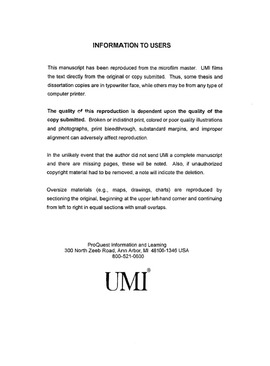| dc.contributor.advisor | Sutton, William H., | en_US |
| dc.contributor.author | Sanchez, Mauricio A. | en_US |
| dc.date.accessioned | 2013-08-16T12:18:49Z | |
| dc.date.available | 2013-08-16T12:18:49Z | |
| dc.date.issued | 2002 | en_US |
| dc.identifier.uri | https://hdl.handle.net/11244/535 | |
| dc.description.abstract | The solution of the RTE is given in terms of the discrete ordinate method taking into consideration the interactions between the foil and the fiber, assuming a linear-anisotropic scattering function for the scattering characteristics of the fiber, and including the directional properties of the foils as part of the boundary condition limits. The discretization of the boundary is given in terms of a matrix form that accounts for the 144 possible incident-reflective directions using the S4 quadrature. Prediction of the reflectance function in fiber insulation while using measured reflectance data of the type of backing utilized provided good qualitative agreement. The use of the linear anisotropic model does not account for the two-dimensional scattering effects of the fibers modeled as infinite cylinders, especially in the near grazing angles since the scattering directions of a single fiber and the slab medium are different except for angles of incidence near or equal at normal incidence. The equal weight quadrature utilized in the theoretical analysis tends to distribute the scattered energy evenly around the solid angle subtended by the hemisphere from its center, which is important in radiative heat transfer predictions when the inherent directional biasing of the quadrature has an adverse effect in the spatial orientation of the geometry. However, using the full directional reflectance data helps to diminish this directional biasing (even intensity hemispherical distribution), which in turn, will lead to better prediction of properties or attain accurate radiative transfer calculations | en_US |
| dc.description.abstract | The objective of this work is to determine radiative properties of a fire barrier composed of metallic foils and a ceramic fiber blanket compatible with a commonly used model, which can account for multidimensional and angular effects. The reflectance function for the foils, ceramic fiber, and combinations among the materials must be determined in order to assess these properties. Several methods were evaluated to account for the reflectance function determination. A Kirchhoff-based relationship and a Raleigh-Rice Perturbation theory were two analytical methods that showed to be inconclusive at predicting reflectance function in rough surfaces. An experimental scatterometer based on the angular discretization of the discrete-ordinates or SN method was built to account for the directional property of reflectance of the metallic materials and their interaction with the fiber insulation. The reflectance distribution function for the metallic surfaces showed to be good specular reflectors in the spectral/gray model. | en_US |
| dc.description.abstract | The radiative properties of the fibrous material must be established to compile an accurate model for the scattering properties and spectral/gray properties of the insulation before solving the radiative transfer equation (RTE). This fiber insulation can be categorized as one material composed of fibers randomly oriented in space, with a near isotropic probability scattering distribution in both the wavelength range 1--12 mum and gray scale. Reflectance function measurements of the combination metallic surface-insulation showed that optically thin samples behave as optically thick upon positioning a metallic surface as a backing. Moreover, the influence in the type of backing is stronger in optically thin samples than in optically thick. Values in the measured reflectance function were larger with a reflective backing rather than a non-reflective one. | en_US |
| dc.format.extent | xvii, 168 leaves : | en_US |
| dc.subject | Heat Radiation and absorption. | en_US |
| dc.subject | Fireproofing. | en_US |
| dc.subject | Engineering, Mechanical. | en_US |
| dc.subject | Building, Fireproof. | en_US |
| dc.title | A study of directional radiative properties of thermal fire barrier materials. | en_US |
| dc.type | Thesis | en_US |
| dc.thesis.degree | Ph.D. | en_US |
| dc.thesis.degreeDiscipline | School of Aerospace and Mechanical Engineering | en_US |
| dc.note | Adviser: William H. Sutton. | en_US |
| dc.note | Source: Dissertation Abstracts International, Volume: 63-11, Section: B, page: 5483. | en_US |
| ou.identifier | (UMI)AAI3070640 | en_US |
| ou.group | College of Engineering::School of Aerospace and Mechanical Engineering | |
